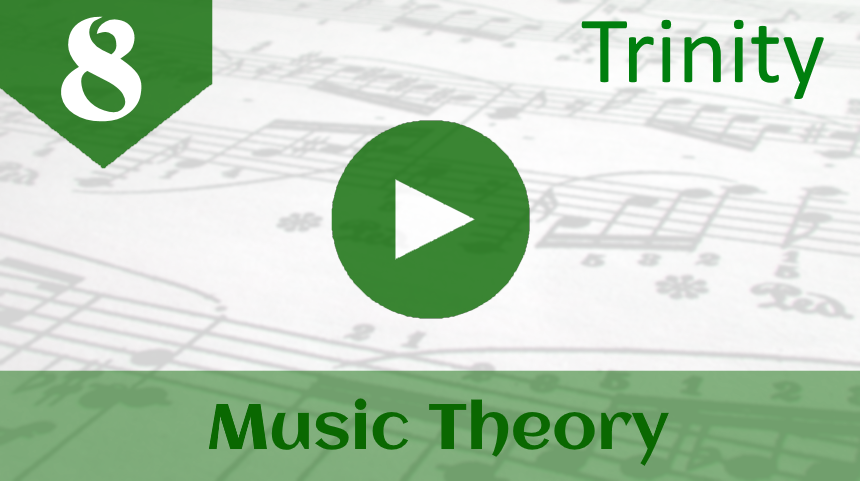Welcome to the Trinity Grade 8 Music Theory Start Page!
On this page you can find the syllabus information, and links to the free and paid Trinity Grade 8 Music Theory lessons available on this site.
You will find a large number of free lessons on this website, or get the full Trinity Grade 8 Music Theory course in your preferred format:
Trinity Grade 8 Free Music Theory Lessons
- Note Names in Other Languages
- Passing Chords
- Chromatic Chords
- Extended Dominant Chords
- The Neapolitan 6th
- Borrowed Chords and Parallel Keys
- Secondary Dominants
- Other Chromatic Chords
- Augmented 6th Chords
- Distant Modulation
- Identifying Prevailing Key
- Harmonic Analysis
- Serial (12-Tone) Composition
- The Romantic Era
- Identifying the Era
Join the MyMusicTheory
Trinity Grade 8 Music Theory Video Course!
- Video lessons covering the complete Trinity grade 8 syllabus
- PDF download including full explanations, exercises, practice test and answers
- Support via email
- Instant access
- No expiry date on the course

Trinity Grade 8 Syllabus
Form
- The concerto — the number and type of movements likely to be found in Baroque, Classical and Romantic concertos — definitions for each as defined in the workbook
- The cadenza
- Étude
- Nocturne/Song without words
- The Lied
- Mazurka
- Prelude
- Waltz
Composers and General Knowledge
Romantic period as defined in the workbook
Serial technique as defined in the workbook
Composers of particular relevance to this grade are those writing in the Romantic period (approximately 1830–1900), e.g. the later works of Beethoven and works by Brahms, Chopin, Mendelssohn, Schubert and Schumann
Pitch
- Recognising and writing all Dorian mode and whole-tone scales
- Recognising and writing all Mixolydian mode scales
- Identifying an extract written using Mixolydian mode
- Recognising and writing serial tone rows (and their retrogrades)
- Writing a melody of 12 or 16 bars in length using notes from the major, minor, pentatonic major, pentatonic minor, blues or whole-tone scales or using notes from the Aeolian, Dorian or Mixolydian mode or a serial tone row
- Writing an effective modulation through a pivot chord
- Recognising and writing passing 6/3 and 6/4
- Recognising and writing chromatic chords — the Neapolitan 6th, augmented 6th chords (Italian, French and German), secondary dominants, borrowed chords from the tonic minor key
- Recognising and writing suspensions
- Harmonising two phrases of a chorale in an appropriate style (no bass line given and modulation will normally be necessary)
- Recognising features of Romantic piano/orchestral composition as defined in the workbook
- Transposing music for any transposing instruments for the grade (transposing interval to be known include those for Grades 6 and 7 and also piccolo, cor Anglais, cornet in Bb, xylophone and glockenspiel)
- Ranges of piccolo, cor anglais, cornet in Bb, tuba, xylophone, glockenspiel, as defined in the workbook
- Layout of Romantic scores (for orchestra/concertos) as defined in the workbook
- Musical terms and symbols
Download the complete Trinity Music Theory Syllabus here.

